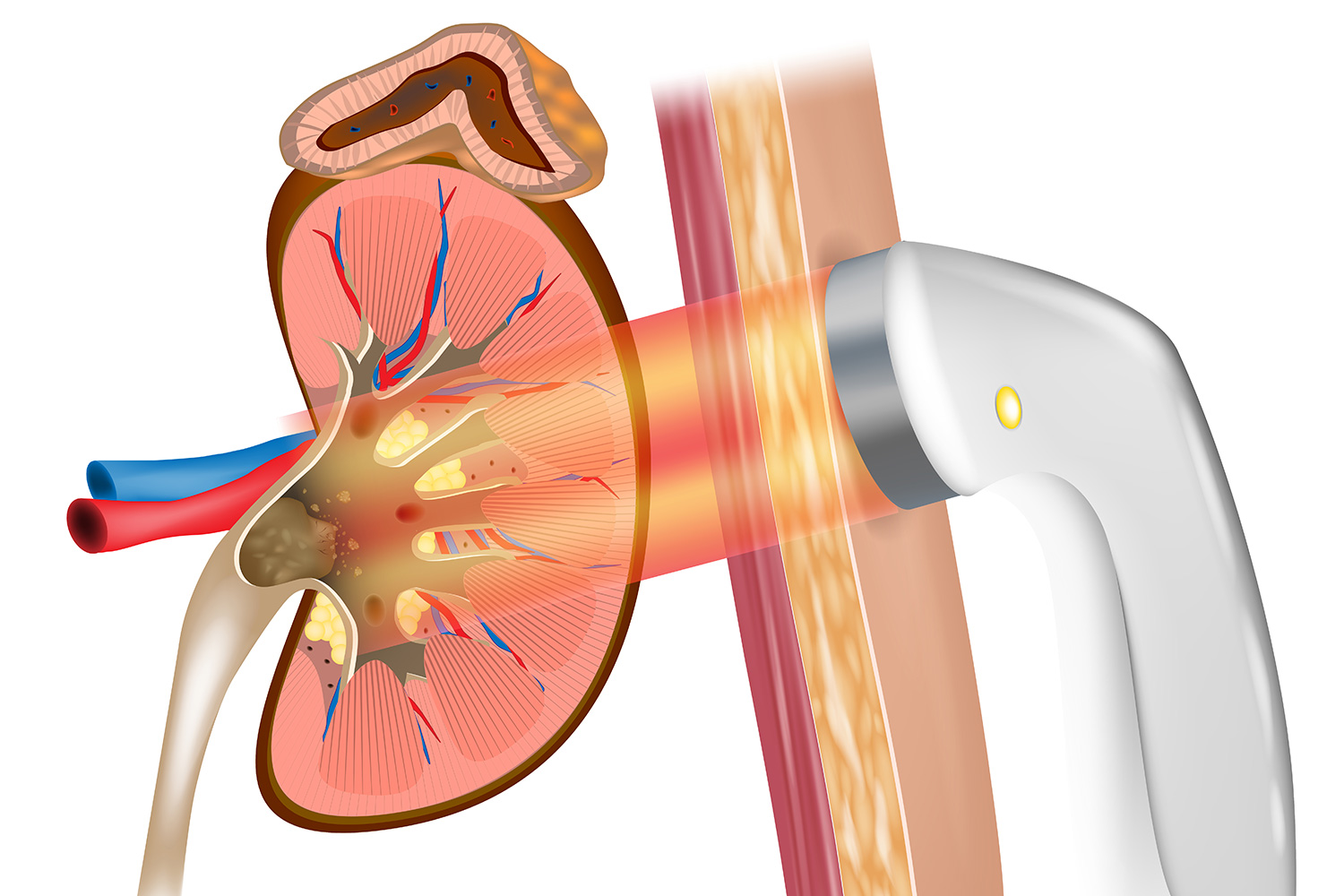Overview
Extracorporeal Shock Wave Lithotripsy (ESWL) is a non-invasive medical procedure used to treat kidney stones. It employs shock waves to break down stones into smaller fragments, allowing them to pass more easily through the urinary tract. As a widely preferred treatment option, ESWL has gained global recognition due to its effectiveness and minimal recovery time compared to traditional surgical methods.
Understanding the ESWL Procedure
The ESWL procedure is designed to target kidney stones without the need for incisions or invasive techniques. It utilizes high-energy sound waves, generated outside the body, to disintegrate stones into smaller, sand-like particles that can be naturally expelled through urine.
Steps Involved in the ESWL Procedure
- Patient Preparation: Before the ESWL procedure, patients undergo an evaluation that includes imaging tests like X-rays or ultrasounds to locate the kidney stones. Patients are generally advised to avoid eating or drinking several hours before the procedure.
- Positioning and Anesthesia: During the ESWL procedure, the patient lies on a water-filled cushion or directly on a specialized table. Depending on the patient’s comfort and the stone’s size and location, general anesthesia, regional anesthesia, or mild sedation may be used.
- Delivery of Shock Waves: A machine called a lithotripter generates shock waves that pass through the patient’s body and focus on the kidney stones. The ESWL procedure typically lasts about 30 to 60 minutes, during which thousands of shock waves are delivered at a controlled rate to break the stones.
- Monitoring and Post-Procedure Care: Throughout the ESWL procedure, healthcare professionals monitor the patient’s vital signs. After the procedure, patients are usually observed for a short period before being discharged. Pain relief medications and instructions for hydration are provided to help flush out stone fragments.
Effectiveness and Outcomes of the ESWL Procedure
The success rate of the ESWL procedure largely depends on factors such as the size, type, and location of the kidney stones, as well as the patient’s overall health. According to international research, ESWL is highly effective for stones smaller than 2 centimeters and located in the kidney or upper part of the ureter. However, stones larger than this may require multiple sessions or alternative treatments.
Studies have shown that ESWL has a success rate of about 70-90% for small to medium-sized stones. The likelihood of stone-free outcomes decreases for larger or harder stones, and patients may experience residual fragments that could require further treatment.
Benefits of the ESWL Procedure
- Non-Invasive: The ESWL procedure does not involve surgical incisions, reducing the risk of infections and complications.
- Quick Recovery: Most patients can resume normal activities within a few days post-procedure.
- Minimal Pain: Compared to traditional surgery, the ESWL procedure causes less discomfort, with pain usually managed through over-the-counter medications.
Risks and Complications Associated with the ESWL Procedure
While the ESWL procedure is generally safe, it is not without potential risks. Common side effects include blood in the urine, bruising on the back or abdomen, and mild pain or discomfort. Rare complications can include:
- Infection: Though uncommon, urinary tract infections can occur after the procedure.
- Stone Fragments: Incomplete fragmentation may leave residual stones, necessitating additional treatments.
- Kidney Damage: Repeated ESWL procedures can potentially cause minor kidney damage or scarring.
Post-ESWL Procedure Care and Follow-Up
After undergoing the ESWL procedure, patients are encouraged to drink plenty of water to facilitate the passage of stone fragments. Follow-up imaging may be scheduled to ensure that the stones have been successfully cleared. Patients should report any severe pain, fever, or signs of infection to their healthcare provider immediately.
Conclusion
The ESWL procedure is a highly effective and safe method for treating kidney stones, offering patients a non-invasive alternative to surgery with a relatively quick recovery time. While it is generally successful for most cases, it is essential for patients to discuss their specific condition with a healthcare provider to determine the most suitable treatment approach.
By understanding the ESWL procedure and its associated benefits and risks, patients can make informed decisions and achieve optimal outcomes in managing kidney stones. International research continues to support ESWL as a cornerstone treatment in urology, advancing its application and improving patient experiences worldwide.



